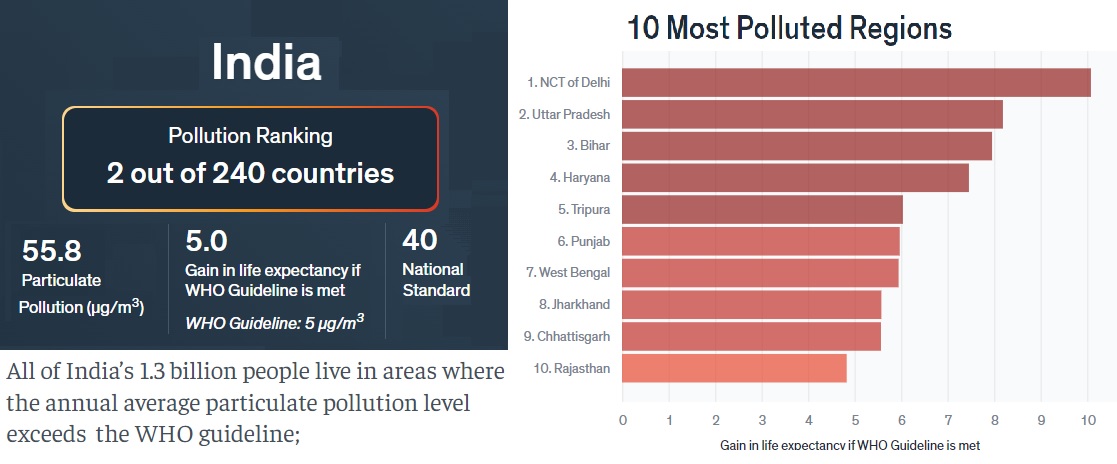7667766266
enquiry@shankarias.in
According to the University of Chicago report, the air pollution has major impact on the life expectancy.
|
Record of Pollution policies |
|
|
Issues |
Impact on Life Expectancy |
|
Use of Tobacco |
Reduce by 2.8 years |
|
Sanitation and unsafe water |
Reduces by 1 year |
|
Use of alcohol |
Reduces half a year |
According to the WHO, annual average concentrations of PM 2.5 should not exceed 5 µg/m3.
A 2022 Lancet study reveals air pollution caused more than 16.7 lakh premature deaths in India in 2019. Out of the total deaths, 9.8 lakh were caused by PM2.5 pollution, and another 6.1 lakh by household air pollution.

|
Steps taken by Government to Curb Air Pollution |
|
References